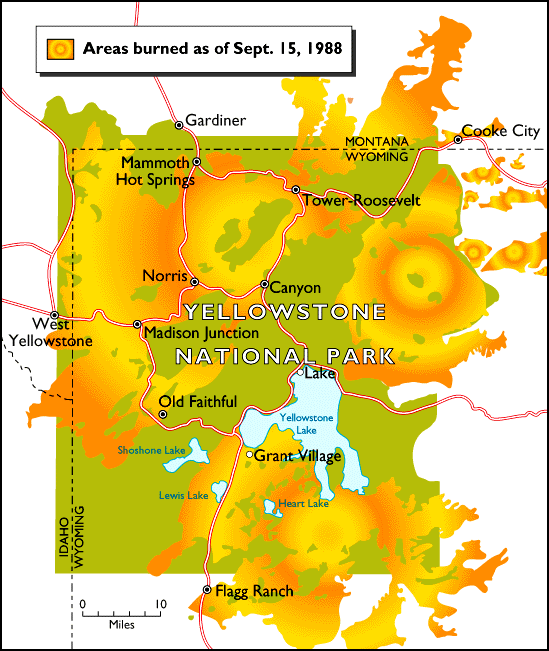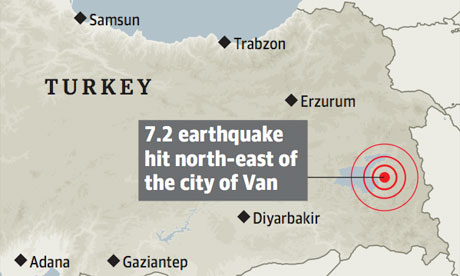The great wildfires of the 1988 summer in Yellowstone will always be ingrained into the memories of the residents who live in the area. The fires started in mid July and lasted until September 11,1988 when rain/snow fell in the area. During those long three months, 63 percent of the park burned and around 300 mammals in the park were killed. How these horrific fires started was mainly from lightning strikes (42) but there was also a human factor as well. Nine of the 51 fires were started by human carelessness (cigarette butts, improper extunguished fires). All of this could have been prevented had the natural burn policy not been implemented that year. The federal government in total spent 120 million dollars fighting the fires and around 25,000 people were on the ground or flying above fighting the inferno. The firefighters saved people's property but the environmental damage was much higher due to the extreme drought that was occurring that summer.

The Crown fire of 1988 in Yellowstone National Park (affected mammals shown in foreground)
http://www.thefurtrapper.com/images/Crown%20Fire%20Elk.jpg
From a complexity approach there could have been outside factors that could have made the fires much worse. More people would have been affected by these fires had Wyoming's low amount of private homes built in wilderness areas near the park expanded. Had there been a higher population density around the park many more homes/lives would have been affected that summer and the price tag (cost) of the fires would have been higher. Additionally, had there been a higher density of dead plant matter on the forest floor (fuel) the fires would have destroyed even more acreage of the park instead of just 63 percent. Fire suppression had led to the loss of diverse plant species and has also led to a larger fire risk in these areas where suppression of fires is the norm.
Steep slopes (topography) of the land in the region also allowed for the quick spread and the intensity of the fires as well. Rain also would have played a large factor into mitigating the fires as well. The summer of 1988 was one of the driest seasons on record only receiving 8.5 inches of rain total. Had there been even less rain maybe around 3 inches instead the fires would have started even sooner than they did. On the opposite side of the spectrum had there been more rain not nearly as many fires would have started that year and they possibly could have been contained quicker. Wind also intensifies fire behavior and had the winds been gusting stronger on certain days, the fire could have spread out much quicker. The other risks associated with the Yellowstone fires are in conjunction with the density of the road system in the park, the density of lightning strikes that occur in the park and historic fire locations.
What everyone has learned from this event is to educate the public about the dangers and causes of forest fires. New mitigation strategies have been created from this event to help further prevent an outbreak like the fires of 1988 from occurring again (see links page).

Extent of burned area due to the 1988 wildfires in Yellowstone
http://wildfiretoday.com/2009/08/20/yellowstone-fires-big-blowup-august-20-1988/
Links: http://www.firewisewyoming.com/firebehavior1.html
http://wyohomelandsecurity.state.wy.us/Library/mitigation_plan/Chap17_Wildland_Fire.pdf











